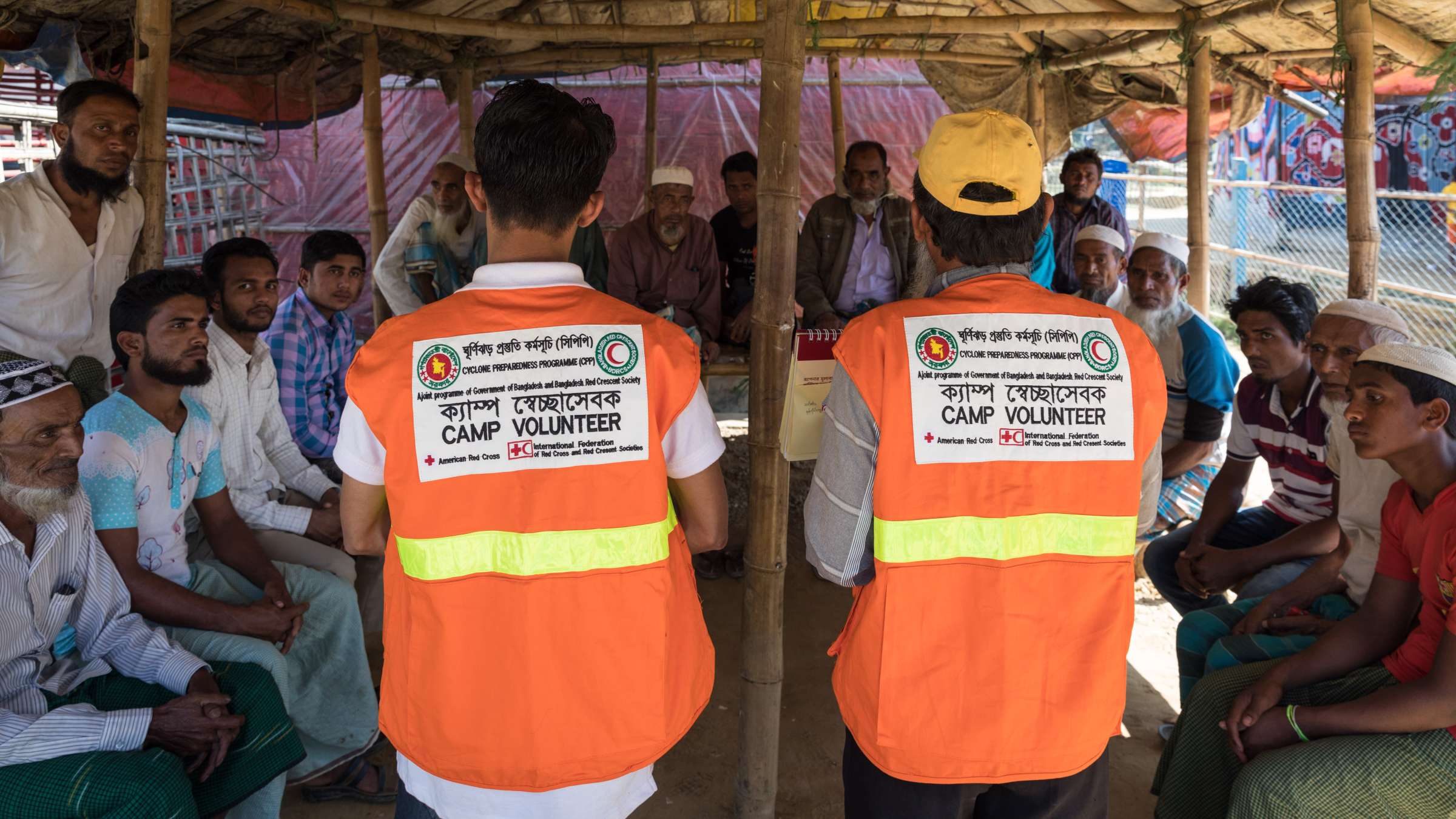Enhancing Understanding and Management of Disaster Risk in Humanitarian Contexts
In a world experiencing increasingly unpredictable and intense moments of fragility, stemming from human-induced climate change, the COVID-19 pandemic, violence and conflict, protracted crises make up about 80% of the humanitarian portfolio. Without more effective ways to understand the nature of risk in protracted crises, the number of communities in need of humanitarian assistance will only increase. This at a time when reducing vulnerability is critical to preventing hazards from turning into disasters. This session will highlight the challenges related to managing disaster risk in complex and protracted emergencies, while providing concrete recommendations of how to address these challenges. Panelists and exchanges with participants on good practices will demonstrate ways of treating risk drivers differently, considering common analysis frames that address intersectional vulnerability. Recommendations will be made of how to connect action to progressive financing and partnership options to make gains stick.
Session Objectives
This session aims to strengthen understanding of how to address multi-hazard and systemic risk across the humanitarian-development-peace nexus in protracted crises and complex emergencies.
It also seeks to identify ways to address systemic challenges and barriers, including underlying risk drivers, siloed financing and planning, for instance through comprehensive DRR pathways tailored to specific contexts.
Finally, this session will inspire transformative commitments from humanitarian and development actors as well as research, public and private finance, donors, governments and media, to take new approaches to managing risk in complex emergency contexts.
Moderator
- Irwin Loy - Asia editor, The New Humanitarian
Speakers
- H.E. Marina Berg – Ambassador, Embassy of Sweden, Jakarta
- Gernot Laganda - Chief, Climate and Disaster Risk Reduction, World Food Programme
- Banak Dei Wal - Director-General for Disaster Management, Ministry of Humanitarian Affairs & Disaster Management, South Sudan
- Pablo Ruiz Hiebra - UN Resident Coordinator for Uruguay, United Nations Resident Coordinator Office
- Aisha Jamshed - Country Director, Pakistan, Welthungerhilfe
- Maina Talia – Secretary, Tuvalu Climate Action Network
Experience this event
Watch the session
Documents
Learn more
Read this section to learn more about the topic of disaster risk reduction in the context of protracted crises and complex emergencies, ensuring you come prepared for the session.
Where do we stand
In a world where humanitarian emergencies, driven by conflicts, violent insecurity, human-induced global warming and the recent COVID-19 pandemic, do not cease to decrease, better understanding systemic risk and implementing DRR approaches is a necessity. Key challenges needing to be addressed include:
- Systemic and multi-hazard nature of risk blurs the boundaries between individual risk factors, threats, borders and sectors.
- Complexity of protracted crises and humanitarian emergencies renders controlling hazards and threats particularly difficult for the actors involved, as it is often outside of their mandates and capacities.
- Difficulty of addressing root risk drivers, such as inequality, and key barriers to DRR implementation, such as siloed financing and planning
Parallelly, key opportunities for addressing DRR in humanitarian contexts include
- Implementing joint approaches across the humanitarian-development-peace (HDP) nexus, where a very diverse range of actors can cooperate and complement each other’s activities, for example in terms of risk analysis and DRR planning.
- Jointly addressing the intersectional vulnerability associated with conflict contexts is a practical and important way of reducing risk.
- Developing multi-year and flexible financing allows humanitarian-development actors and communities to plan ahead.
Session guiding questions
- How must risk assessment and analysis be adapted to account for the unique characteristics that make reducing disaster risk different in complex emergencies?
- What are the gaps in addressing DRR in crisis settings and how might these be overcome?
- What collaboration is needed between HDP nexus organizations, Government agencies and donors to reduce drivers of risk?
- What kinds of changes are needed in our financing and partnership modalities to unlock disaster risk reduction bottlenecks in complex emergency settings?

Agenda
Location
BNDCC 2-Ground Floor
Online access
Interpretation
AR, EN, FR, RU, ES, ZHDetails
Contact
Paola Albrito, [email protected] Loretta Hieber Girardet, [email protected] Marlene Grundstrom, [email protected] Adam Fysh, [email protected]
